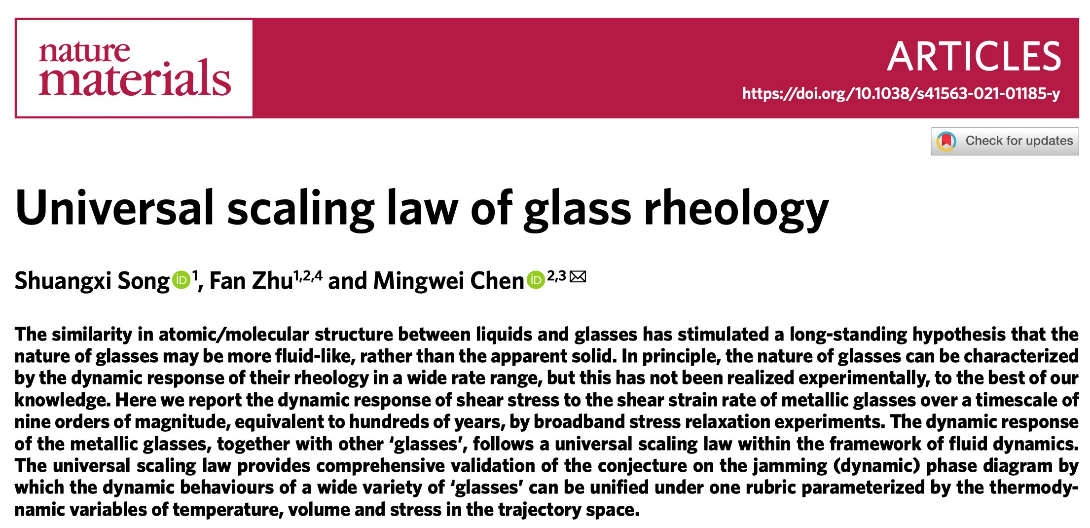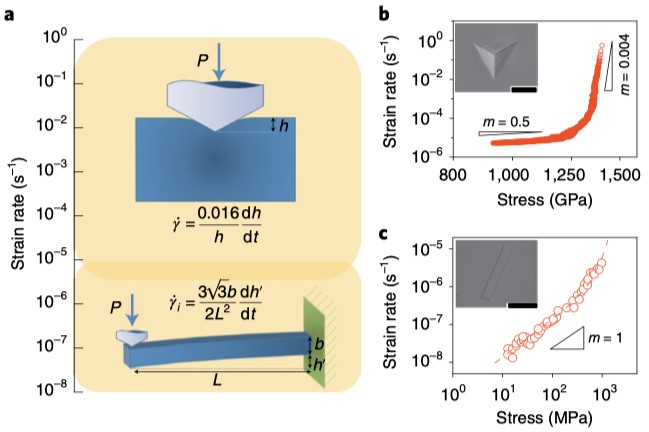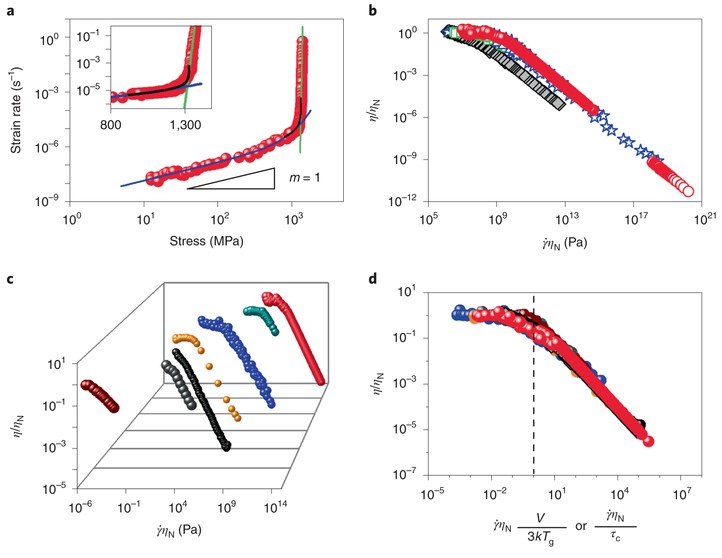On February 1st (Beijing time), the internationally renowned academic journal “Nature Materials” published online the research article “Universal scaling law of glass rheology” achieved by a team of Dr. Song Shuangxi, Dr. Fan Zhu from School of Materials Science and Engineering, Shanghai Jiaotong University and Professor Mingwei Chen from the Department of Materials, Johns Hopkins University. Paper link: https://www.nature.com/articles/s41563-021-01185-y. This study measured the full-frequency response and stress relaxation of metallic glass at room temperature for the first time through an original ultra-wide time and stress scale experimental design. It was further found that various glassy substances follow the rheological transition driven by the same kinetic parameters. This study proposed a universal scaling law of glass rheology, subverting people’s traditional perception of glass as solid. Dr. Shuangxi Song is the first author of this research paper, and Professor Mingwei Chen is the corresponding author. School of Materials Science and Engineering of Shanghai Jiao Tong University is the first completion institute.

Glass is an indispensable and essential material in our daily production and life. It has some characteristics of solid and some features of the liquid. The nature of glass is an intricate problem that has long plagued the field of condensed matter physics and materials science. The similarity in atomic/molecular structure between liquids and glasses has stimulated a long-standing hypothesis that the nature of glasses may be more fluid-like than the apparent solid. In principle, the nature of glasses can be characterized by the dynamic response of their rheology in a wide rate range, but this has not been realized experimentally. Dr. Song and his collaborators achieved an ultra-wide time scale of 9 orders of magnitude to characterize the stress-strain rate response of metallic glass at room temperature using an ingenious design (Fig. 2). They obtained the transition of rheological behaviors from Newtonian fluid to non-Newtonian fluid, many-body interactions, and cooperative shear transitions (Fig. 3). By comparing with other experimental results, it is found that the dynamic response of metallic glass rheology is similar to other “glass” materials, such as polymer, silicate glass, colloidal solution, emulsions, fire ant aggregates, sand and gravel particles. The dynamic response of the metallic glasses, together with other “glasses,” follows a universal scaling law within the framework of the fluid dynamics (Fig. 3) and reveals a mechanistic transition from thermally activated Newtonian flow to stress-driven cooperative shear, which takes place when γ˙η_NV⁄3kT_g=1. The universal scaling law provides comprehensive validation of the conjecture on the jamming (dynamic) phase diagram (Fig. 4) by which the dynamic behaviors of a wide variety of “glasses” can be unified under one rubric parameterized by the thermodynamic variables of temperature, volume, and stress in the trajectory space. The results of this research provide important ideas for understanding the nature of glassy matter, and the proposed universal scaling law provides essential scientific guidance for the design of high-performance “glass” materials and their practical applications.

Figure 2 Broadband rheology measurements and experimental results on a metallic glass at room temperature.

Figure 3 Rheological behavior of metallic glasses and other “glass” materials described by the universal scaling law.

Figure 4 Dynamic phase diagram for “glass” materials predicted by the universal scaling law.
This work is supported by the National Natural Science Foundation of China, MOST 973 of China, and the National Science Foundation.
Dr. Shuangxi Song has been engaged in research on metallic glasses' microstructure and deformation behavior for over a decade. He has participated in several national scientific research projects. Since joining Shanghai Jiao Tong University, he has published many papers as the first or corresponding author in outstanding international academic journals such as Nature Materials, Nature Communications, PRL, and International Journal of Plasticity, and finished the research subjects of the 973 Project and the Shanghai Pujiang Talent Program as a PI.
Source:https://en.smse.sjtu.edu.cn/news/detail.aspx?id=91
Writer: Shuangxi Song

